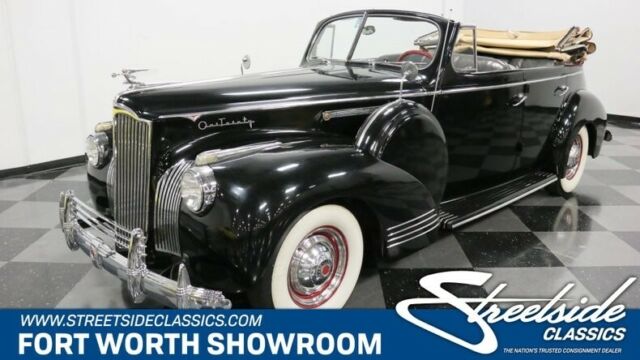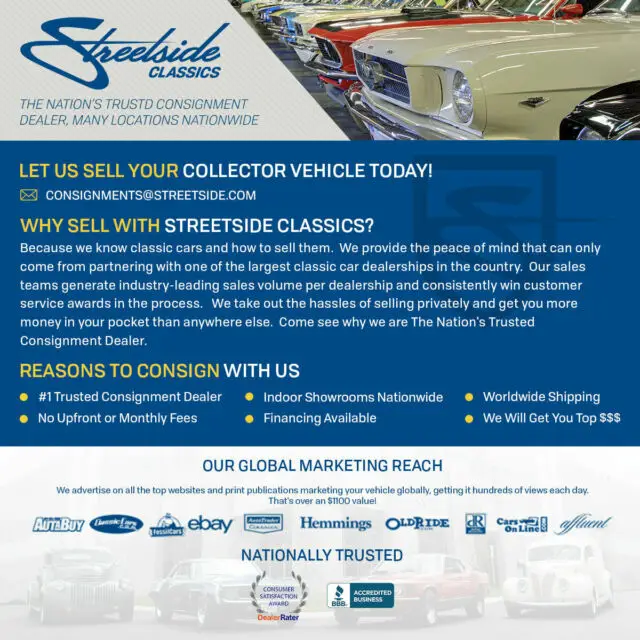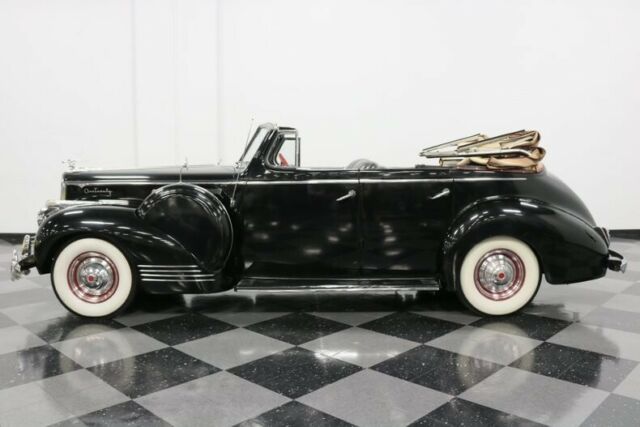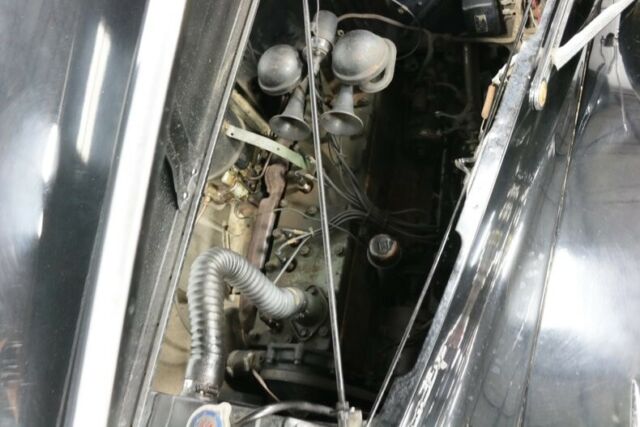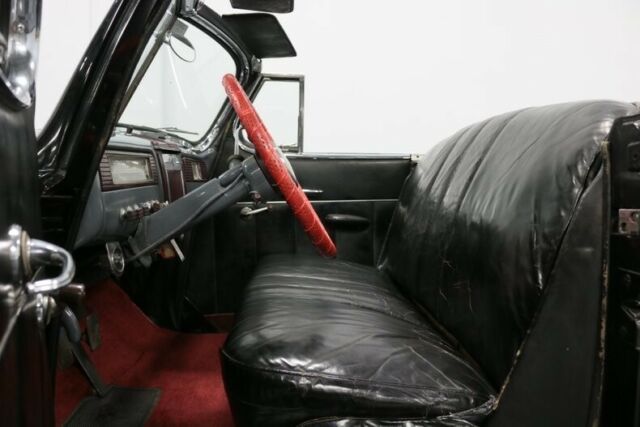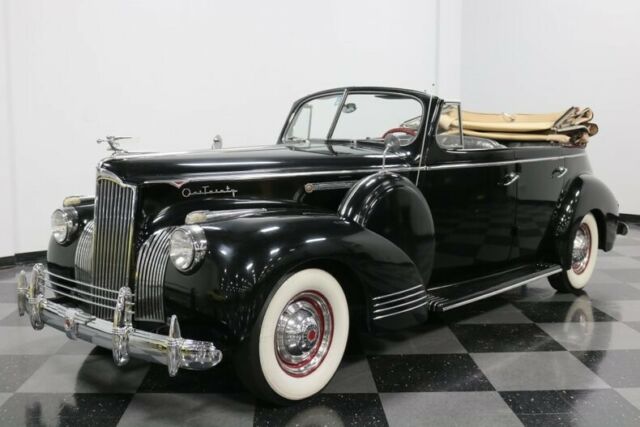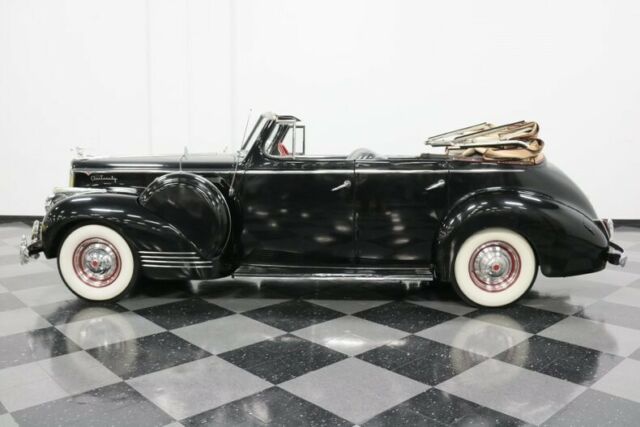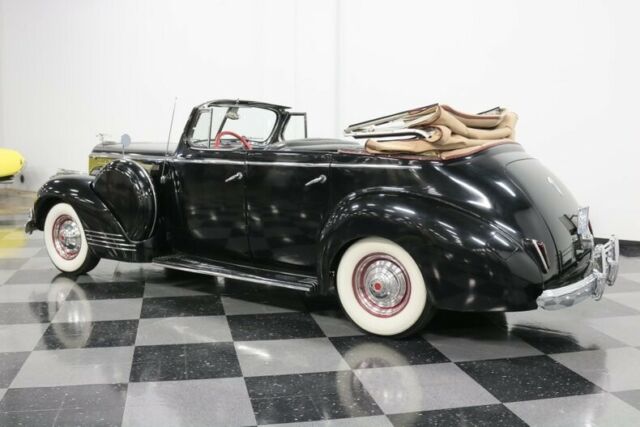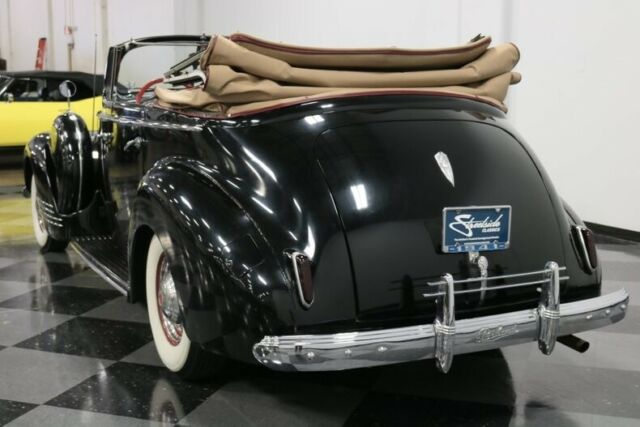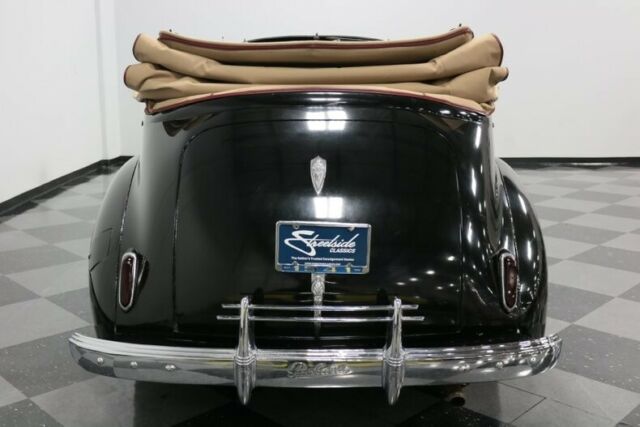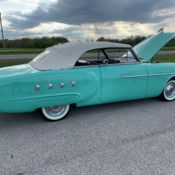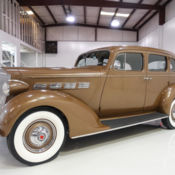|
You're likely looking at this 1941 Packard 120 convertible because you already know what it is. And if that's the case, you also know that it's a bargain. Arguably the best-driving Packard of the early 1940s, the 120 was hardly a "bargain" Packard, because it's got all the big car charm and looks, and for the moment, it's one of the most affordable ways to get an eight-cylinder Packard convertible of any kind. Wearing proper Packard Black... paint, this handsome coupe gets just about everything right. Paint and bodywork are very presentable, which, again, makes the price seem almost comically low. It's not a "fixer-upper" it's ready to enjoy and while it's not perfect, it's awfully danged nice when cruising down the road. The tall, narrow Packard grille is a trademark, as are the flanking fender grilles and body side moldings, all highlighted by the car-length trim work to make it look sporty. Sidemounts are a rather rare option on the 120 and give it a presence that rivals its more expensive siblings. In fact, the biggest problem with the 120 back when it was new is that it was simply too good and buyers figured why should they step up to a large-series car when this one was already excellent in every way? It shows in the detailing around the running boards, the hood vents, and the "donut pusher" hood ornament, which was very similar to the larger cars. The chrome details are just as impressive, with newer shiny bumpers and nice stainless details, and the tan canvas convertible top is in good shape as well. If you want a Packard to drive first and foremost, a 120 is what you should be seeking. The black leather interior is a great matching complement to the black bodywork and uses period-correct vertical pleats on the wide bench seat. It seems roomy inside because Packard moved the shifter to the steering column a few years earlier, and because this is a yacht-like 4-door, there's plenty of room for passengers in the matching rear bench. The steering wheel is nicely wrapped and perhaps showing some age, but the rest of the beautifully painted dash and instruments are quite nice. This car includes optional dealer-installed heater and an underdash AM radio, which was cutting edge tech at the time but sadly not functional today, which is hardly surprising. Rumble seats were discontinued in 1938 which means there's a huge trunk, which carries a jack set and carpeted mat. There's also the aforementioned fitted tan canvas top to give it a beautiful look, top up or down. The 120 uses a 282 cubic inch straight-8, which makes, naturally, 120 horsepower. It's as smooth and torquey as you'd expect and moves the trim convertible with genuine enthusiasm. It was painted with proper Packard olive green paint some time ago (possibly not since the factory) and we don't see many deviations from the original spec under the hood other than maybe the radiator cap and chrome oil bath top cover. An oil bath air cleaner is correct equipment though, as are the coolant hoses, and a single downdraft carburetor that offers great throttle response. The three-speed manual transmission shifts easily thanks to synchromesh on 2nd and 3rd gears and it's pretty happy at 55 MPH. The 120's innovative Safe-T-Flex independent front suspension was now standard across the line, but it was still a great handling car with a lot of confidence on the road. The brakes were similarly powerful and reliable for the period. Handsome steel wheels with more red pinstripes, trim rings, and Packard hubcaps are wrapped in 7.00-15 whitewall tires for the perfect period look. If you know Packards, you know this is a special car. It's ready to drive right now, and if you haven't experienced the joy of a 120, this is probably your last chance to get a drop-top at anything approaching a reasonable price. Call now!
|
 Home
Home Contact us
Contact us NEWEST CARS
NEWEST CARS SELL YOUR CAR
SELL YOUR CAR FAQ
FAQ